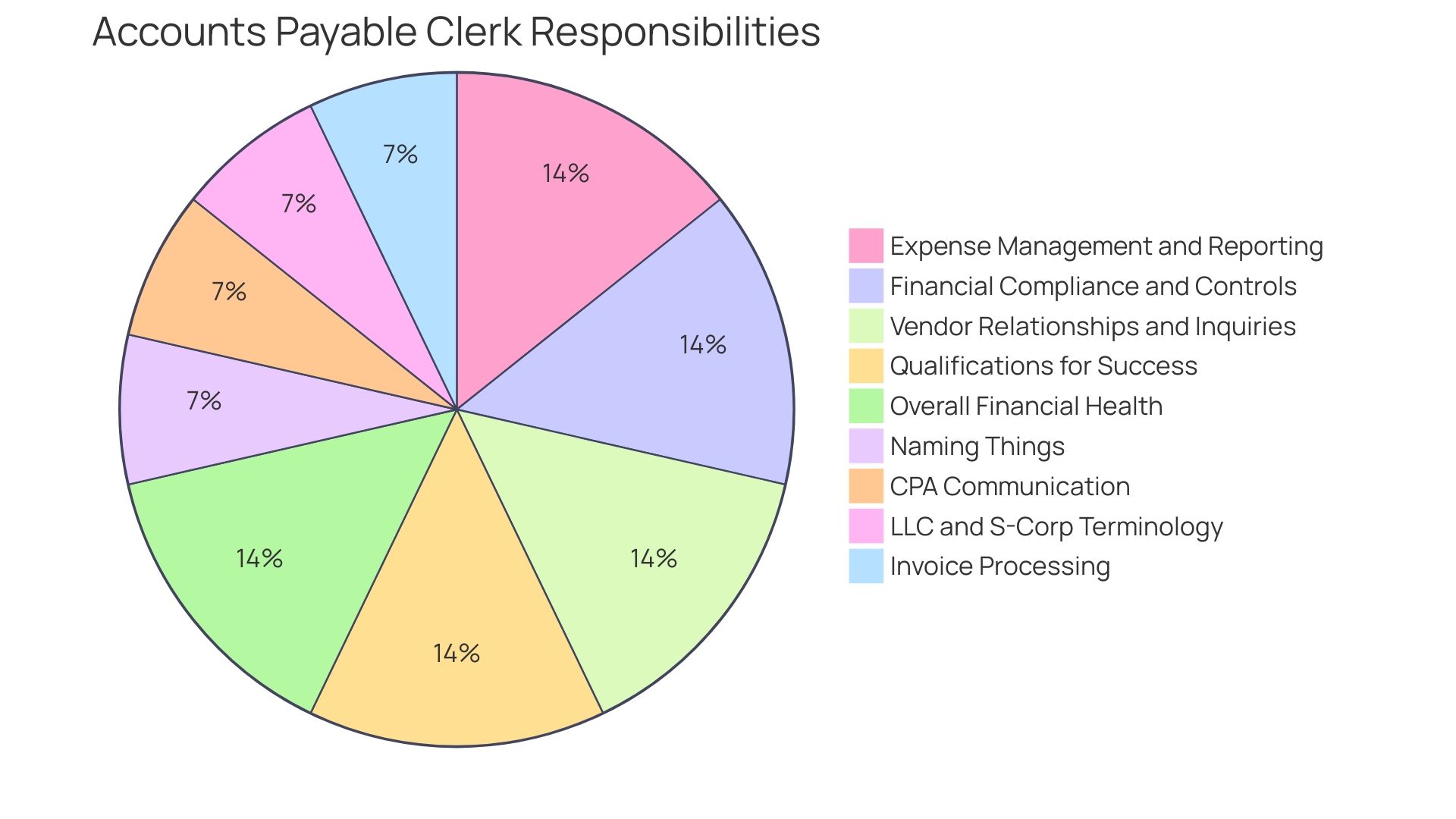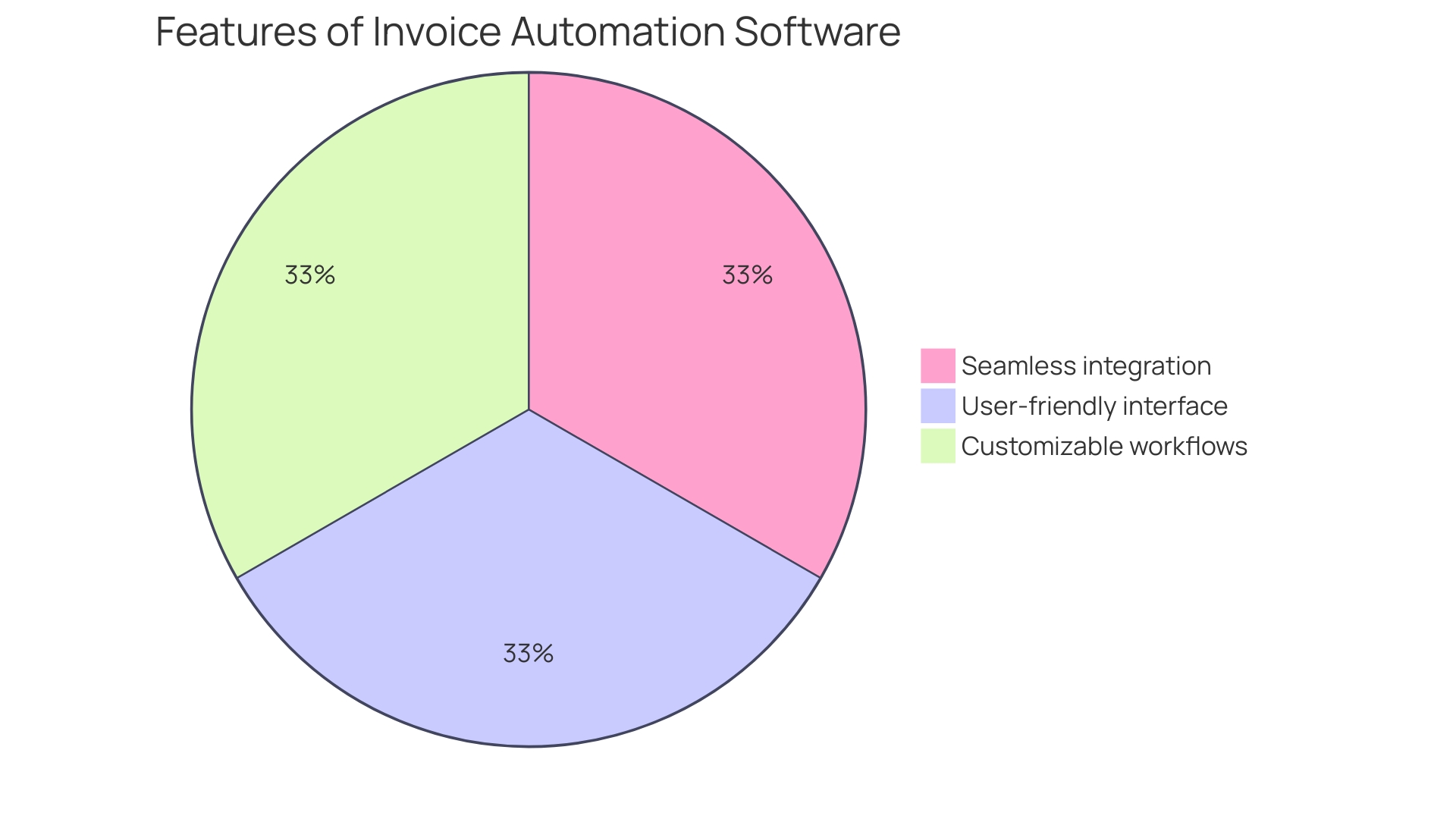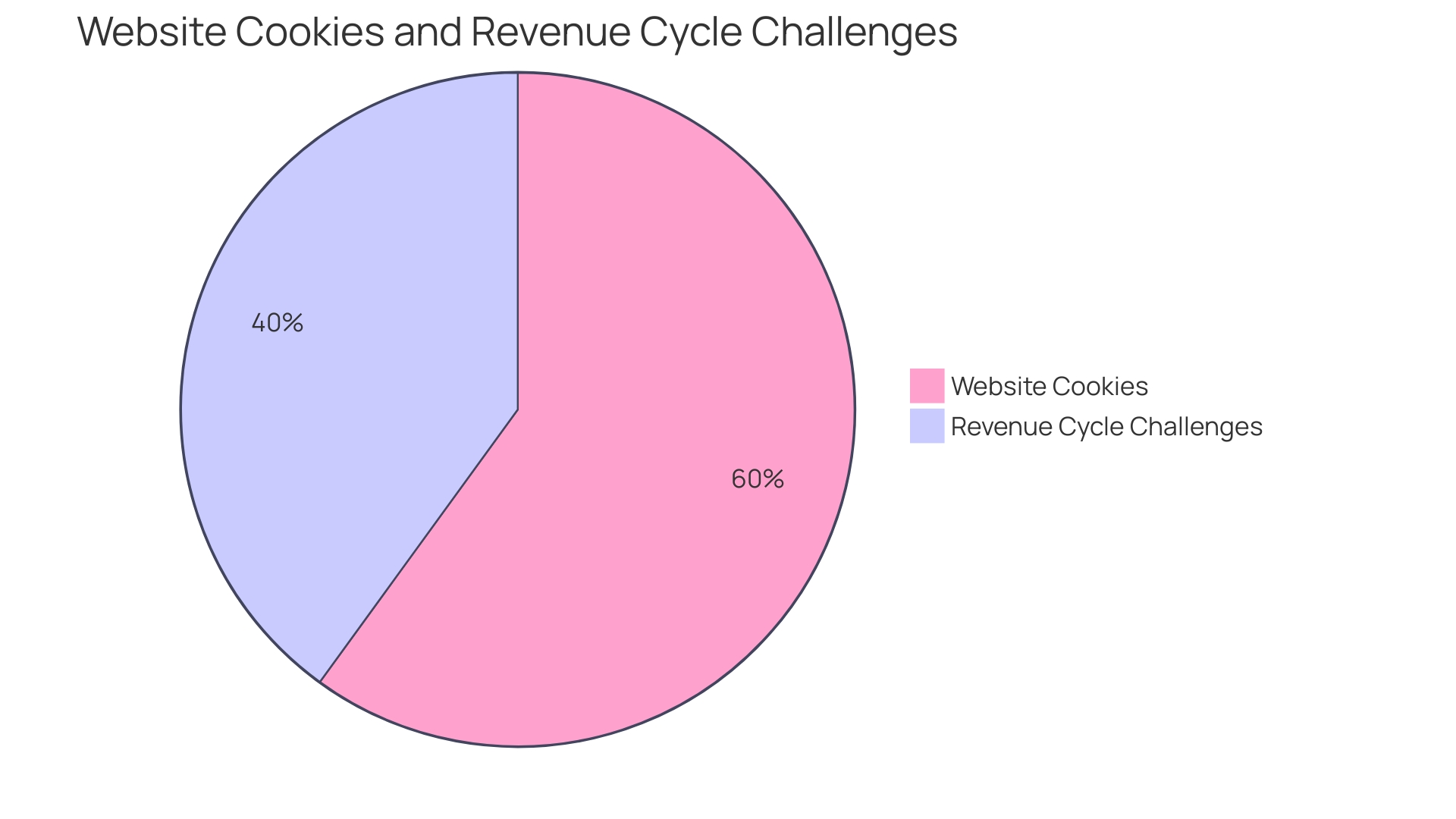Introduction
The Accounts Payable Turnover Ratio is a critical financial indicator that reveals how efficiently a company settles its bills with suppliers. By dividing total credit purchases by the average accounts payable, this ratio provides valuable insights into a company's short-term obligations management. A high turnover ratio suggests prompt payments and the potential for favorable credit terms and discounts on future purchases.
On the other hand, a lower ratio may indicate a slower payment process and raise concerns about liquidity. In the rapidly evolving business landscape, where agility and innovation are key, maintaining a healthy Accounts Payable Turnover Ratio is crucial for financial resilience. This article explores the importance of this ratio, the process of calculating and interpreting it, factors affecting it, strategies to improve it, and its limitations.
By understanding and optimizing the accounts payable turnover ratio, CFOs can enhance their company's financial operations and long-term value.
What is Accounts Payable Turnover Ratio?
The Accounts Payable Turnover Ratio is a critical financial indicator that reveals the frequency at which a company settles its bills with suppliers within a particular timeframe, often annually. To ascertain this ratio, total credit purchases are divided by the average accounts payable for the same period. This calculation provides insight into how effectively a company is managing its short-term obligations.
For example, a high turnover ratio might indicate prompt payments to suppliers, which could result in favorable credit terms and potentially discounts on future purchases. Conversely, a lower ratio might suggest a slower payment process, which could raise concerns about the company's liquidity and cash flow management.
Incorporating real-time data, a company like Delivery Hero, with its extensive employee base, improved operational efficiency by reducing the time to recover locked accounts from 35 minutes to a much quicker resolution, exemplifying effective management of operational processes. This is akin to optimizing accounts payable processes to enhance a firm's financial health.
Recent trends in the market, such as the increasing importance of emergency funds and the integration of wellness benefits in health insurance plans, underscore the need for robust financial strategies. In this context, maintaining a healthy Accounts Payable Turnover Ratio is not only beneficial for supplier relationships but also contributes to a company's overall financial resilience.
Efficiently managing accounts payable is akin to a chef-curated prix fixe menu, where each dish—or payment—is carefully planned and executed to provide an optimal experience, or in the case of a company, financial performance. This analogy is drawn from the prior background of an accountant who transitioned from the restaurant industry, bringing the precision and care of that world into financial management.
In the rapidly evolving business landscape, where agility and innovation are key, companies must regularly assess their financial metrics, such as the Accounts Payable Turnover Ratio, to ensure they remain competitive and financially stable.
Importance of Accounts Payable Turnover Ratio
Understanding the accounts payable turnover ratio is crucial for a company's financial health and efficiency. This metric is a clear indicator of how effectively a business is managing its cash flow, maintaining vendor relationships, and complying with credit terms. A robust turnover ratio suggests that the company swiftly pays its suppliers, fostering stronger supplier bonds and potentially unlocking discounts for early payments.
Conversely, a lower ratio may signal cash flow problems or an inefficient accounts payable process.
By examining the accounts payable turnover, CFOs can gain actionable insights. For example, a company with a high ratio, similar to the concept of a 'prix fixe' menu, reflects a firm commitment to a consistent, predictable payment strategy. This can be as beneficial for a company as a well-curated menu is for a restaurant, providing a fixed, reliable approach that can streamline efficiency.
The importance of this ratio extends beyond just the financial realm; operational efficiency is also impacted. Take the case of Delivery Hero, a global delivery platform employing over 53,000 people worldwide. They faced operational delays due to a cumbersome process for employee account recovery.
By addressing this bottleneck, they significantly reduced the downtime caused by locked accounts. Similarly, efficient management of accounts payable can eliminate similar operational delays, thus saving significant time and contributing to overall productivity.
Furthermore, the current financial landscape, as reported by Retail Technology Review, shows that small businesses are facing slow sales growth and rising late payment times. This underscores the relevance of closely monitoring accounts payable turnover to avoid exacerbating cash flow issues in challenging economic times.
Financial ratios, including the accounts payable turnover, provide a standardized benchmark that can be used to compare a company against its peers. These ratios, expressed as percentages, help diagnose financial health and are essential for making informed business decisions and shaping strategies. As financial performance analysis becomes increasingly vital for competitive agility and innovation, understanding and optimizing the accounts payable turnover ratio is key for CFOs looking to enhance their company's financial operations and long-term value.
Calculating the Accounts Payable Turnover Ratio
Understanding the accounts payable turnover ratio is a critical aspect of managing a company's short-term liquidity and operational efficiency. To accurately compute this ratio, you will need to determine two essential figures from your financial records: the total credit purchases and the average accounts payable for the period in question. The formula for calculating the accounts payable turnover ratio is:
Accounts Payable Turnover Ratio = Total Credit Purchases / Average Accounts Payable
To find the Total Credit Purchases, you can look at the income statement or the statement of cash flows. These financial documents will provide a clear report of the purchases made on credit during the specified period. Average Accounts Payable, on the other hand, is calculated by combining the accounts payable amounts at the beginning and end of the period, then dividing by two to obtain the average.
By applying this straightforward formula, businesses can gauge how effectively they are paying off their suppliers and creditors, which, in turn, provides insights into cash flow management and operational agility. This ratio can also be indicative of the company's creditworthiness and its relationship with vendors, which is crucial for maintaining a healthy supply chain and ensuring business continuity.
Interpreting the Accounts Payable Turnover Ratio
The accounts payable turnover ratio offers a window into a company's financial practices, shedding light on how quickly a business settles its debts with suppliers. A robust ratio points to a swift payment cycle, signaling efficient cash flow management and potentially advantageous supplier terms. On the flip side, an exceedingly high ratio might hint at overly aggressive payment strategies, risking liquidity and cash reserves.
Conversely, a subdued ratio indicates a more leisurely pace in fulfilling supplier obligations. While this may suggest savvy cash conservation, it can also reflect deeper issues such as liquidity constraints or deteriorating supplier relationships—a precarious position that could thwart operational fluidity.
For instance, Monday.com's success story is a testament to the critical role of prudent cash flow management. Their journey to becoming free cash flow positive, even amidst slowing growth, underscores the importance of efficient growth strategies. They've demonstrated that prudent financial operations can lead to more investment opportunities, extended cash runways, and enhanced value for shareholders.
In light of recent industry news, small businesses in the UK are grappling with delayed payments, despite positive jobs growth—a situation that underscores the significance of the accounts payable turnover ratio in assessing a company's financial health. Companies must navigate these waters carefully to maintain both financial stability and strong business relationships.
Understanding this ratio, therefore, is not just about crunching numbers—it's about reading between the lines of your financial statements to make strategic decisions that align with your company's long-term objectives and operational needs.
Analyzing the Accounts Payable Turnover Ratio
Monitoring the accounts payable turnover ratio is a key indicator of a company's financial health and operational efficiency. Comparing this ratio against industry standards or historical data can spotlight trends and indicate areas for improvement. For example, a company like Monday.com demonstrates the significance of efficiency and growth, having swiftly achieved free cash flow positivity.
The ratio also reveals insights into payment dynamics and vendor relations, which are crucial for maintaining positive cash flows and financial robustness. Similarly, in the e-commerce realm, analyzing metrics such as post-acquisition value (PAV) is essential for evaluating customer-driven revenue and sustaining the company's core financial strength. As the financial landscape evolves, CFOs recognize the importance of understanding operational intricacies, as highlighted by the resurgence of the COO role.
Companies that focus on growth efficiency, like Monday.com, exemplify the successful management of cash resources to maximize shareholder value. The accounts payable turnover ratio, a clear-cut financial metric, assists in evaluating the efficacy of expense management and the financial compliance in small businesses, ultimately contributing to a company's long-term financial health.

Factors Affecting Accounts Payable Turnover Ratio
A company's accounts payable turnover ratio is not only a reflection of their payment practices but also a pulse on the operational efficiency and financial agility of the organization. The ratio's variability can be tied to several elements including negotiated payment terms with suppliers, which differ by industry and by individual supplier relationships. For instance, a company offering a selection of technology and services at a fixed price, much like a 'prix fixe' menu, may require a more streamlined payable process to maintain its efficiency promise to clients.
Industry standards also play a significant role in shaping the ratio. These standards are often informed by broader economic trends and can vary widely across different sectors, from the rapid service expectations in the food industry to the complex, large-scale operations in global delivery platforms.
Moreover, cash flow management practices can enhance or impede the ratio. For example, Delivery Hero, with its vast employee base, faced account lockout issues that directly affected operational efficiency. By addressing these challenges and optimizing IT processes, they were able to reduce time spent on account recovery, indirectly impacting their payable practices by freeing up resources.
Likewise, the accounts payable process itself must be critically assessed for efficiency gains. Accurate and timely processing of financial transactions, as handled by accounts payable clerks, is key to maintaining financial compliance and managing vendor relationships effectively, which ultimately sustains a healthy turnover ratio.
CFOs can leverage these insights to identify strategic opportunities for optimizing the accounts payable turnover ratio, thus enhancing the overall financial performance and positioning of their companies.
Strategies to Improve Accounts Payable Turnover
To optimize an accounts payable turnover ratio, a multifaceted strategy is essential. It begins with the negotiation of favorable payment terms with suppliers, allowing for more flexible cash flow management. Additionally, embracing technological advancements to automate the accounts payable process can lead to significant efficiency gains.
A prominent example of automation's impact is seen in the case of Delivery Hero, which managed to save 200 hours per month by automating account recovery processes, thereby enhancing operational efficiency. Furthermore, regular analysis and review of vendor contracts are crucial for maintaining healthy supplier relationships and ensuring the financial robustness of the organization.
The significance of automation in the accounts payable landscape is underscored by the projection that the global accounts payable automation market will swell to $5.3 billion by 2028. This growth emphasizes the trend of removing manual intervention in the payment cycle, which can be facilitated through platforms employing artificial intelligence, such as Ramp, Bill, Expensify, and AvidXchange. By leveraging these technologies, businesses are not only streamlining their processes but also reducing overhead expenses—critical in an era of persistent inflation and rising operational costs.
In the realm of financial operations, the role of an accounts payable clerk transcends mere transaction processing; it encompasses managing vendor relations and contributing to the strategic management of operating expenses. The pursuit of operational cost-efficiency, where expenses are a fraction of revenue, is integral to the success of any business. This is echoed in the advice to reevaluate all spending and prioritize accordingly, ensuring that financial activities align with broader business objectives.
The experience of companies like Hershey's, which overcame financial challenges by revamping their accounts receivable through automation, further validates the importance of strategic expense management and innovative solutions in sustaining financial health.

Limitations of the Accounts Payable Turnover Ratio
The Accounts Payable (AP) turnover ratio, an indicator of how frequently a company pays off its suppliers, is critical for assessing liquidity and operational efficiency. However, it's not the sole metric CFOs should rely on to gauge financial health. External factors such as seasonal buying patterns, bulk purchases, and changes in vendors' credit terms may skew the ratio.
As seen in the fluctuating pay scales of accounting professionals, external economic conditions can significantly impact financial metrics. Similarly, unexpected events, like the last-minute federal holiday for President Reagan's passing, can disrupt financial operations and reporting. These events underscore the need for a comprehensive analysis incorporating various financial statements and performance indicators.
Dividend potential, for instance, is another metric that income investors scrutinize alongside AP turnover to predict future earnings and cash flow, which is ultimately the lifeblood of any business. In essence, while the AP turnover ratio is a valuable tool, it's imperative to interpret it within a broader financial context to make informed decisions.

Conclusion
Maintaining a healthy Accounts Payable Turnover Ratio is crucial for financial resilience in today's rapidly evolving business landscape. By understanding and optimizing this ratio, CFOs can enhance their company's financial operations and long-term value.
The ratio provides insights into how efficiently a company settles its bills with suppliers. A robust ratio indicates efficient cash flow management and potentially advantageous supplier terms. Conversely, a lower ratio may suggest liquidity constraints or deteriorating supplier relationships.
To compute the ratio, CFOs need to determine total credit purchases and average accounts payable for a specific period. This information helps gauge cash flow management and operational agility.
Monitoring the ratio is essential for evaluating financial health and operational efficiency. CFOs can leverage this information to identify opportunities for optimization and enhance overall performance. Factors affecting the ratio include negotiated payment terms, industry standards, and cash flow management practices.
Strategies to improve the ratio include negotiating favorable payment terms, embracing technology for automation, and analyzing vendor contracts. Automation streamlines processes and reduces overhead expenses, while effective expense management contributes to success.
While the ratio is valuable, it should not be the sole metric used. External factors and unexpected events can impact it, necessitating a comprehensive analysis of various financial statements and indicators.
In conclusion, CFOs must prioritize understanding and optimizing the Accounts Payable Turnover Ratio to enhance financial operations and long-term value. By implementing practical strategies and considering the broader financial context, CFOs can ensure their company remains competitive and financially stable.




